The Renaissance of I-N-D-E-P-E-N-D-E-N-T Retail
One question, two objects, and three sources for this week's obsession: INDEPENDENT RETAIL.
Welcome back to Your Design Friend! Last week we obsessed over FREE SAMPLES, and this week we’re going all in on INDEPENDENT RETAIL.
One Q: Have Millennials & Gen Zers killed retail?
NOPE— but we ARE being gaslit into thinking so!
The fall of big-box department stores. Vacant malls across America. The rise of online-only brands. Then, a global pandemic. Retail has seen better days, and the recent closure of over 300 Bed Bath & Beyond stores could serve as the final nail in the coffin.
BUT WHO DO THEY BLAME? US! The royal ~young people~ are consistently lambasted as the culprit. We don’t have the time! We want it now! We’re LAZY! Yadda yadda yadda!
But I’m here to say that retail had opps wishing for its downfall! Direct-to-consumer brands have always shaded retail, labeling physical stores as stuffy, boringly beige, and archaic. However, when these same brands began seeing the lack of IRL interaction as a barrier to profit-making, the story they sold us began to flip.
Let me say it with my chest: the opp in question is direct-to-consumer brands. Yes! All of them!
Direct-to-consumer is a business-to-consumer retail sales strategy where a business builds, markets, sells, and ships a product directly to the customer.
At the start of the dot-com bubble in the late 90s, we were all promised a direct-to-consumer revolution to free us from extra fees from middlemen (middle-them?). Fast forward to the early 2010s, when there was a surge in brands that were using the direct-to-consumer label as a selling point (like my former employer, Warby Parker 👓).
Over time, the D2C label began virtue signaling as a quality, convenient, and more ethical. Since companies weren’t using third-party factories, they theoretically had more oversight of labor practices.
In what seemed like an instant, we had a plethora of home design D2C options to choose from—sheets from Snowe or Parachute, picture frames from Framebridge or Artifact Uprising, couches from Article or Interior Define, paint from Clare or Backdrop, shelves from Burrow or Floyd. All began online, and none had physical stores when they launched.
Instead of in-person window shopping, D2C brands said, “Just open a *browser window from the comfort of your home, idiot.” Traditional retail was out (eww!), and virtual try-ons, A.I. dressing rooms, and “just buy and try” were in.
They played us. After yelling about the virtues of supporting online-only businesses —the environment! direct costs! efficiency!—an invasion of small, cold, Black Mirror-coded D2C retail stores began. Oops, I’m sorry—don’t call them stores. They were tRaNsfORMing the retail experience: Casper calls their stores “sleep shops” (and once charged for naps), FrameBridge calls them “studios” (featuring designer photo booths), and other brands go with some form of outpost, experience, or installation.
There is one problem— they don’t know how to do retail well.
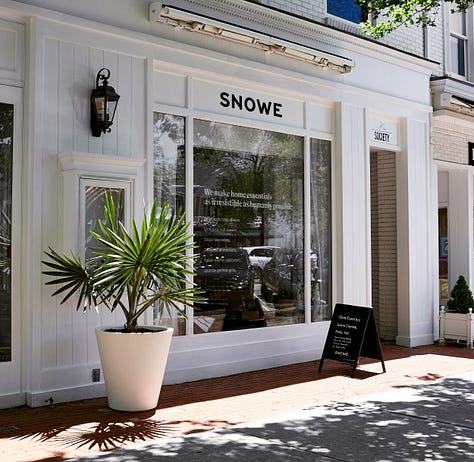
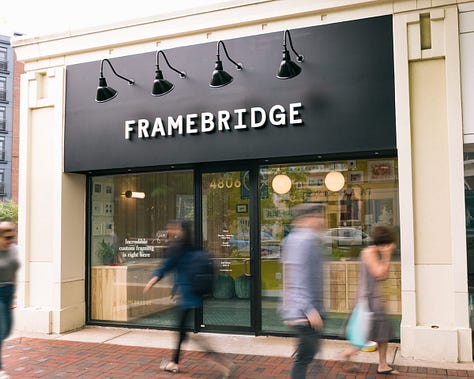
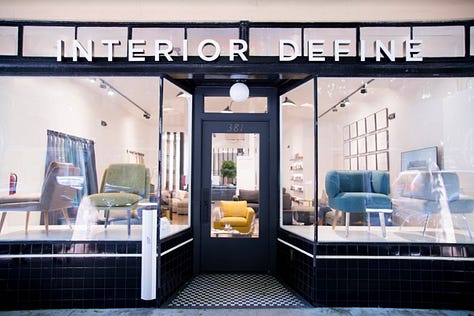
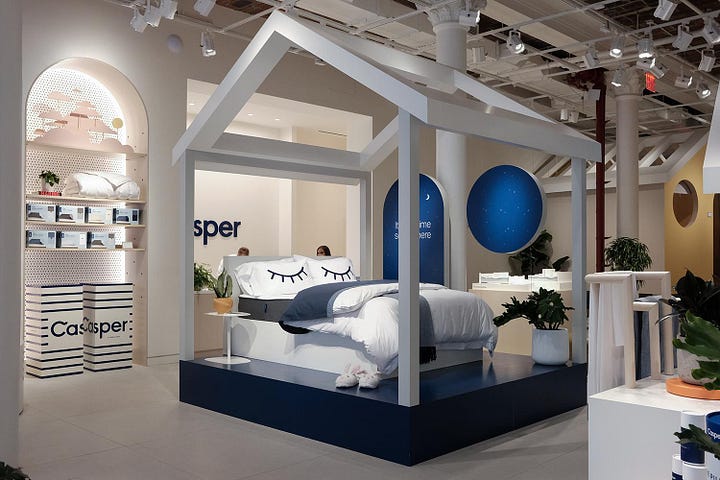
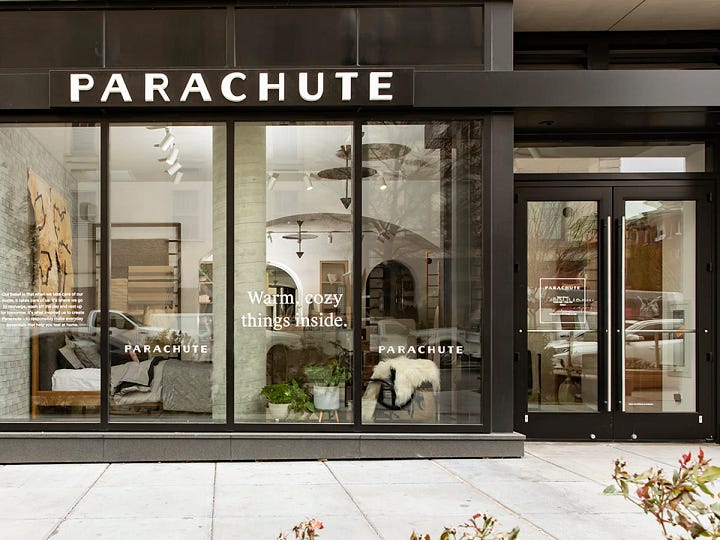
Casper went public after announcing a plan to open 200 brick-and-mortar retail stores nationwide. Not long after, the originator of the mattress-in-a-box revealed $92 million in losses, changed leadership, and went back to being a private company to lick its wounds. Then, there is Interior Define, which in 2021 announced an ambitious plan to open more than 30 retail stores. This year, the D2C brand couldn’t pay its creditors or deliver the furniture that customers ordered and was promptly sold off in parts.
I’m not surprised. I’ve frequented many D2C stores, and they lack… personality! Transferring an online shopping experience to IRL isn’t formulaic. If you’re not intentional about the user experience, design, and curation, then the result is some white box with massive logos yelling at you.
Those online-only dweebs were wrong— retail isn’t dead! I’m obsessed with independent retail design stores. Unlike stores that adhere to a clinically curated national brand, independent stores are bursting with life.
I love visiting and supporting independent design stores across the country. Each has unique tilts, owner stories, and curation reflecting ACTUAL! REAL! HUMANS!
When you walk into a D2C store, the single employee staring at you represents a massive brand that tells them how to greet customers, display the product, upcharge, and get you on the mailing list. When you visit independent retail stores, the owners and workers who welcome you have a personal stake in the products they’re asking you to consider bringing home. It feels so much more intentional. Visiting a shop in a new city can expose you to local makers, new brands, and a sense of an area’s culture.
Two Objects
Here are the two core objects you could use in your journey supporting independent retail:
A GROWN-UP TOTE: I love totes as much as the next person. But nothing is worse than a flimsy tote letting you down after a day of shopping. I have this foldable, rolling Hulken tote saved ($99 — I know, I’m looking for dupes).
TAPE MEASURE: If you visit a local independent design store for specific projects or items, pack a tape measure in your bag! Sometimes independent stores have items from local makers that might not have dimensions available. This self-locking one I’ve been eyeing from HOTO is on sale for $9.99, down from $24.99.
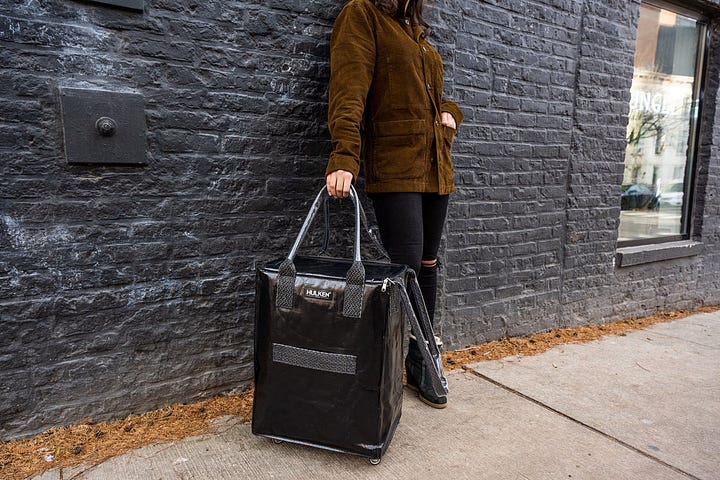
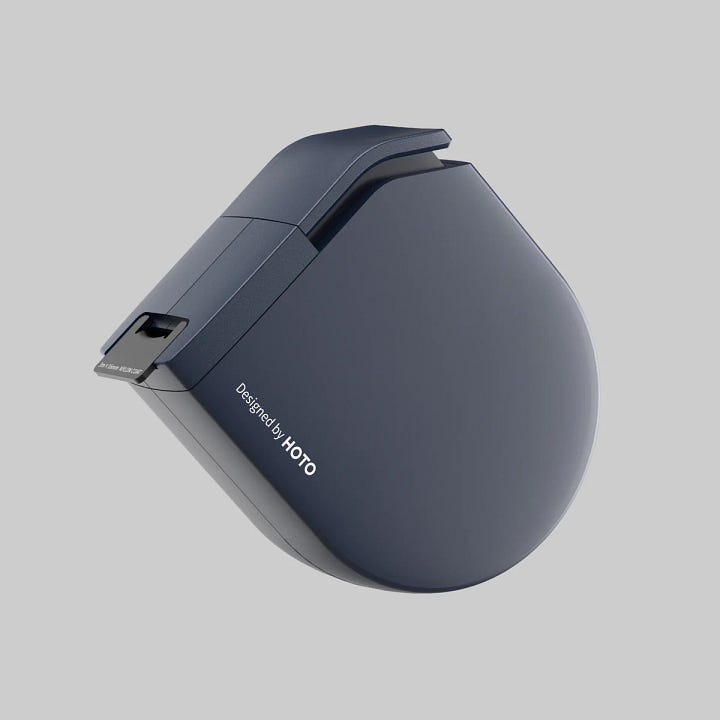
Three Sources
I’m sharing the independent design stores I frequent on the East Coast, but you can also find an independent design store in your area! Check out Dwell’s “American’s Best Design Shops” list or Architectural Digest’s “63 Home Decor Stores to Shop Now and Always” (gifted article).
PHILADELPHIA: My North Star of independent design shops is Yowie. Owner Shannon Maldonado, who just opened a Yowie-designed hotel, is THAT gurl. The Yowie store, while small, doesn’t feel overwhelming. It’s bright, colorful, and on a street with florists, artists, and other home-design shops. Both times I’ve visited, Shannon was behind the counter, and after chatting with her, you can tell that her curation is an expression of her background, curiosity, and politics. The New York Times shares how the independent design store laid the foundation for a retail resurgence in South Philly.
BALTIMORE: TBH, D.C. has a couple of great vintage design stores, but when it comes to independent design stores, I fear that we’re severely lacking. The bright spot is that nearby in Baltimore, Good Neighbor has us set. The retail space in Baltimore is gorg: it has a greenhouse, a large outdoor area, and an adjacent coffee shop. The curation is well-defined—the selection is Japandi (Japanese x Scandinavian). It’s also helpful to see the furniture they sell in use—the coffee mugs, planters, stools, and benches are integrated into the space. Dwell named Good Neighbor one of the best independent design shops in 2021.
NYC: Okay, New York has a lot of great independent design shops (Bestu Studio, Lichen, BEAM), but Coming Soon is a step ahead. The independent shop has been at the center of curating the “it” piece du jour (that corn stool you’ve seen everywhere). I like the shop because it does textures very well and focuses primarily on bathrooms, bedding, and hosting. Coming Soon is a go-to if you need a pillow, rug, blanket, duvet, or serving platter. More from A.D. on how the couple behind the brand is changing how we live.









First 3: YOWIE, Philly | Second 3: Good Neighbor, Baltimore | Last 3: Coming Soon, NYC Until our next obsession,
🖤,
YDF




